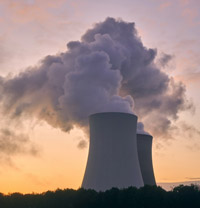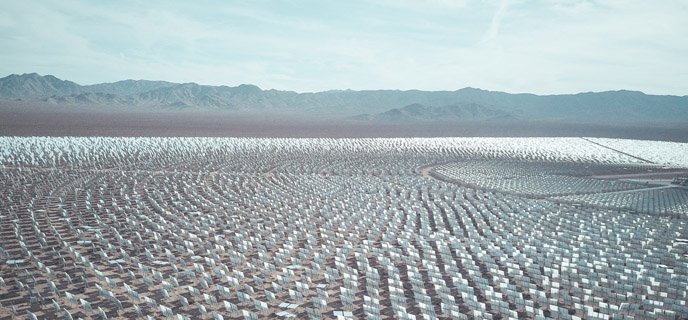Hydrogen, often touted as the energy carrier of the future, has a spectrum of colors that represent its various production methods. These colors, ranging from green to pink, serve as a classification system within the energy industry to differentiate between the types of hydrogen. However, it's essential to note that these color codes are not universal and may vary over time and between countries.
Why is Hydrogen Labeled with Colors?
The color-coding system for hydrogen is more than just a naming convention. It provides insights into the production method, the resources consumed, and the emissions generated during the process1. Despite the colorful nomenclature, hydrogen, in its natural state, is an invisible gas. Thus, the colors don't represent any visible difference but rather the production and environmental implications. The most recent school of thought is that the hydrogen industry should move away from the color determinations and adopt policies that focus on the Carbon intensity score to determine the best path forward.
Listen To The Best Podcast On Hydrogen
Deciphering the Carbon Intensity Score: Hydrogen's Environmental Litmus Test
The Carbon Intensity Score for hydrogen is a metric that quantifies the amount of carbon dioxide (CO2) emissions produced per unit of hydrogen generated. This score provides a clear picture of the environmental impact associated with the production of hydrogen, taking into account the entire lifecycle of the process, from raw material extraction to the final production stage. Different methods of hydrogen production, whether from fossil fuels or renewable sources, have varying carbon footprints, and the Carbon Intensity Score serves as a standardized measure to compare these methods.
Understanding the Carbon Intensity Score is crucial in the global effort to combat climate change and reduce greenhouse gas emissions. As hydrogen emerges as a potential alternative to fossil fuels, its environmental credentials are under scrutiny. A low Carbon Intensity Score indicates that the hydrogen production method has minimal environmental impact, making it a sustainable choice for the future. Conversely, a high score suggests a significant carbon footprint, which may negate the environmental benefits of using hydrogen as a clean energy source. By prioritizing hydrogen production methods with low carbon intensity scores, industries and governments can make informed decisions that align with global sustainability goals, ensuring that the transition to a hydrogen economy genuinely contributes to a greener and cleaner planet.
Green Hydrogen: The Pinnacle of Sustainable Energy Production
Green hydrogen, often regarded as the epitome of clean energy, is primarily produced through the electrolysis of water using electricity generated from renewable energy sources, such as wind, solar, and hydropower. This method ensures that the entire hydrogen production process is free from greenhouse gas emissions, making green hydrogen a truly sustainable energy carrier. As the global emphasis on reducing carbon footprints intensifies, green hydrogen emerges as a front runner in the race to replace fossil fuels. Its production, especially when powered by surplus renewable energy, offers a dual advantage: it provides a means to store excess renewable energy and produces a clean fuel that can be used across various sectors, from transportation to industrial processes.

The versatility of green hydrogen is further amplified when considering its potential in grid balancing and energy storage. As renewable energy sources are inherently intermittent, there's a growing need for solutions that can store excess energy during periods of high renewable output and release it during low output periods. Green hydrogen can be stored and then converted back to electricity using fuel cells, offering a solution to this challenge. Moreover, as technological advancements continue to drive down the costs associated with electrolyzers and renewable energy installations, the economic viability of green hydrogen production is set to improve, further cementing its role in the future energy mix.
Fuel Cells: The Powerhouses for Green Energy
Fuel cells play a pivotal role in the hydrogen economy. They convert hydrogen, whether green or another type, back into electricity, producing only water as a byproduct. Companies like Plug Power and Bloom Energy are at the forefront of fuel cell technology, driving innovations that enhance efficiency, reduce costs, and expand the applications of fuel cells. Plug Power, for instance, has made significant strides in developing hydrogen fuel cell systems for various applications, including material handling and transportation. On the other hand, Bloom Energy focuses on solid oxide fuel cells, offering solutions for on-site power generation with reduced emissions. Both companies exemplify the potential of fuel cells in transforming the way we produce and consume energy, highlighting the integral role of hydrogen in a sustainable future.
Blue Hydrogen: The First Step to a Low-Carbon Future
Blue hydrogen, often hailed as a transitional energy source, is primarily produced from natural gas through a process known as steam reforming. This method combines natural gas with heated steam, resulting in the production of hydrogen and carbon dioxide. To earn its "blue" designation, carbon capture and storage (CCS) technologies are employed to trap and store the emitted carbon, thereby reducing its environmental footprint.

Recent studies have delved into the environmental implications of blue hydrogen production. One such study highlighted the potential of blue hydrogen as a low-carbon energy carrier, especially when substantial amounts of CO2 from natural gas reforming are captured and permanently stored. The research emphasized that the climate impacts of blue hydrogen could vary significantly based on a few key parameters: the methane emission rate from the natural gas supply chain, the CO2 removal rate at the hydrogen production plant, and the global warming metric applied.
Interestingly, when state-of-the-art reforming techniques with high CO2 capture rates are combined with a natural gas supply that has low methane emissions, blue hydrogen can indeed offer a substantial reduction in greenhouse gas emissions. This makes it comparable to green hydrogen produced from electrolysis powered by renewable electricity. However, it's crucial to note that neither blue nor green hydrogen production pathways currently offer "net-zero" hydrogen without additional carbon dioxide removal.
Another study focused on the environmental performance of mixed plastic waste gasification with CCS to produce hydrogen. This innovative approach not only provides an end-of-life solution for non-recyclable mixed plastic wastes but also produces high-purity hydrogen. The process captures carbon dioxide emissions and injects them into geological sites for permanent sequestration, further emphasizing the potential of blue hydrogen in contributing to a sustainable energy landscape.
Grey Hydrogen

Grey hydrogen, the most prevalent form currently, is produced from natural gas or methane using steam methane reformation. Unlike blue hydrogen, grey hydrogen does not incorporate carbon capture and storage, leading to the release of greenhouse gases. Steam methane reforming (SMR) is the dominant method for producing grey hydrogen and is favored for its cost-effectiveness and high energy efficiency. However, this method has significant environmental implications.
The SMR process emits a considerable amount of CO2, making it less environmentally friendly compared to other hydrogen production methods. While it provides a stable hydrogen output, the associated carbon emissions pose a challenge to its sustainability. As the world grapples with the urgent need to reduce carbon emissions, the environmental impact of grey hydrogen production methods like SMR is under increased scrutiny.
Black and Brown Hydrogen: A Deeper Dive
Black and brown hydrogen are derived from coal resources, specifically black coal and lignite (brown coal), respectively. Historically, these forms of hydrogen have been perceived as the antithesis of green hydrogen due to their environmental implications. The production processes associated with black and brown hydrogen are notably more environmentally detrimental than their greener counterparts.
Coal gasification, a prevalent method for producing hydrogen from coal, has been identified as a cleaner alternative to direct coal combustion. However, this process is not without its environmental challenges. A study on the environmental impact of coal gasification in hydrogen production revealed that while coal mining and cleaning processes primarily emit CO2, other greenhouse gases like CH4 and N2O are also released1. The study further highlighted the significance of carbon capture and storage (CCS) conditions in mitigating the environmental impact, emphasizing the need for sustainable practices in hydrogen production from coal.

Interestingly, the transition to a hydrogen economy is influenced by various socio-economic, energy, and environmental factors. A study analyzing the development of the hydrogen economy in nine countries found that economic indicators, renewable energy adoption, and CO2 emissions significantly impact hydrogen production, patents, and research budgets2. This underscores the interconnectedness of economic growth, sustainable energy practices, and the evolution of the hydrogen sector.
The potential of hydrogen, regardless of its source, cannot be understated. As the world grapples with the challenges of fossil fuel depletion and climate change, innovations in hydrogen production, even from coal, offer a glimmer of hope. By harnessing cutting-edge technologies and sustainable practices, it's possible to transform traditional hydrogen sources into environmentally-friendly alternatives, bridging the gap between our energy needs and environmental responsibilities.
Pink Hydrogen: Harnessing Nuclear Power for a Sustainable Future

Pink hydrogen stands out in the hydrogen spectrum due to its unique production method, which involves the use of nuclear energy. Specifically, pink hydrogen is generated through the electrolysis of water, where the required electricity is sourced from nuclear reactors. Nuclear energy, known for its high energy output and consistent power supply, offers a reliable method for large-scale hydrogen production.
The process of producing pink hydrogen is not just limited to conventional electrolysis. Advanced nuclear reactors, with their very high temperatures, can enhance the efficiency of water splitting, either through high-temperature electrolysis or thermochemical methods. This approach can potentially reduce the energy requirements for hydrogen production, making the process more efficient. Moreover, as nuclear energy does not produce greenhouse gases during operation, pink hydrogen emerges as a low-carbon alternative to hydrogen produced from fossil fuels. As the global community seeks to diversify its energy sources and reduce carbon emissions, pink hydrogen, with its blend of nuclear power and hydrogen technology, offers a promising pathway towards a sustainable energy future.
Turquoise Hydrogen: Bridging the Gap with Solid Carbon Production
Turquoise hydrogen, distinct from its counterparts, is produced through methane pyrolysis. This method involves the decomposition of methane into hydrogen and solid carbon, offering a unique advantage: the production of hydrogen without the direct emission of carbon dioxide. Instead of releasing CO2 into the atmosphere, as seen in traditional steam methane reforming, methane pyrolysis results in the formation of solid carbon. This carbon can be tailored into advanced morphologies, such as nanofibers and nanotubes, which have potential applications in various industries.

The process of methane pyrolysis is typically conducted at higher temperatures, but catalytic decomposition of methane (CDM) has emerged as a promising route for sustainable hydrogen production. CDM can be carried out over various types of catalysts, including nickel, carbon, noble metal, and iron, and can be implemented in different reactor types, such as fixed bed, fluidized bed, plasma bed, or molten-metal reactors. As the global push for cleaner energy intensifies, turquoise hydrogen, with its dual benefits of clean hydrogen production and solid carbon by-product, is poised to play a pivotal role in the future energy landscape.
Yellow Hydrogen: The Solar-Powered Future of Clean Energy
Yellow hydrogen, a relatively newer entrant in the hydrogen spectrum, is produced through the electrolysis of water using solar energy as the primary power source. This method of hydrogen production is gaining traction due to the increasing global emphasis on renewable energy sources and the need to reduce carbon emissions. Solar energy, being abundant and sustainable, offers a promising avenue for producing hydrogen in an environmentally friendly manner.

The process involves using photovoltaic panels to capture sunlight and convert it into electrical energy. This electricity is then used to power water electrolyzers, specifically Proton Exchange Membrane (PEM) electrolyzers, which break down water molecules into hydrogen and oxygen. The produced hydrogen can be stored as a compacted gas or even in chemical storage for later use. As the world grapples with energy storage challenges, especially for off-grid communities and remote areas, yellow hydrogen presents a viable solution. It not only harnesses the power of the sun but also provides a means to store excess energy in the form of hydrogen, which can be converted back into electricity when needed using fuel cells. As advancements in solar technology continue and the costs associated with solar panels decrease, yellow hydrogen's role in the global energy landscape is set to become even more significant.
Gold Hydrogen: A Golden Opportunity Transforming Depleted Wells into Hydrogen Goldmines
In the quest for sustainable energy, Gold Hydrogen, also known sometimes as White Hydrogen, emerges as a game-changer. This carbon-neutral fuel is not just another energy source; it's a revolutionary approach to repurposing abandoned oil and gas sites. By tapping into these once-forgotten reservoirs, Gold Hydrogen offers an affordable and eco-conscious hydrogen solution for everyone—from refineries to power plants and eco-conscious individuals.
Historically, exhausted oil and gas reservoirs faced two fates: they were either sealed and forgotten, leaving behind untapped hydrocarbons, or worse, they became inadvertent emitters of methane and other greenhouse gases. The environmental and economic implications of these overlooked assets are profound. But now, with the infusion of advanced biotechnology, these dormant sites are reborn as lucrative, low-carbon hydrogen producers, aligning with our global energy and environmental aspirations.
The magic of Gold Hydrogen lies in its ability to see potential where others see waste. Rather than abandoning spent subsurface reservoirs, we can rejuvenate them into clean hydrogen hubs. This not only extends the site's operational life but also paves the way for affordable, green fuel alternatives, inching us closer to a carbon-neutral world.

The brilliance of Gold Hydrogen is its fusion of nature and technology. It employs biological mechanisms to transform residual hydrocarbons from subsurface wells into valuable hydrogen, all while capturing and sequestering CO2. This innovative approach transforms what was once considered waste into a cost-effective, environmentally positive energy solution with boundless potential.
The oil and gas sector has undeniably propelled humanity forward. Now, it's our turn to guide the industry towards a more sustainable horizon. With countless depleted oil wells dotting the US and beyond, Gold Hydrogen presents a golden opportunity to collaborate with the oil and gas sector. Together, we can transition from fossil fuel dependency to a more luminous, sustainable future.
The Future of Hydrogen as Energy
The prominence of various hydrogen colors may shift over time. However, the diverse hydrogen spectrum will undeniably play a pivotal role in achieving net-zero emissions. As the world pivots away from fossil fuels, hydrogen, in its various forms, will increasingly power our homes, businesses, and transportation.

